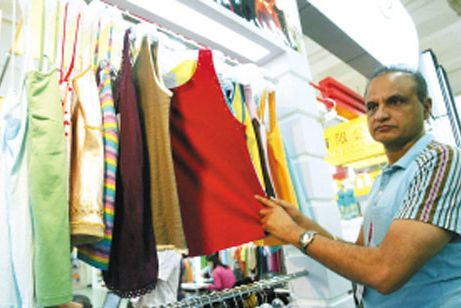 According to news from the textile industry, trade protection in emerging markets such as Latin America has been continuously strengthened this year, and trade protection cases initiated by developing countries have also increased noticeably. Among them, the textile industry is suffering from trade friction. In order to avoid increasing trade frictions and cost pressures, some textile companies have begun to establish external peripheral factories.
According to news from the textile industry, trade protection in emerging markets such as Latin America has been continuously strengthened this year, and trade protection cases initiated by developing countries have also increased noticeably. Among them, the textile industry is suffering from trade friction. In order to avoid increasing trade frictions and cost pressures, some textile companies have begun to establish external peripheral factories. Emerging markets frequently conduct anti-dumping investigations
Since the beginning of this year, the province’s textile and apparel products have encountered numerous anti-dumping investigations from multiple emerging markets.
According to public information, in June this year, Peru launched anti-dumping investigations on some Chinese-made clothing and accessories products. The amount involved was 243 million U.S. dollars, and the amount involved in Fujian accounted for about 10% of the country's total. The enterprises involved were mainly concentrated in Fuxiaquan; in July this year, Brazil launched anti-dumping investigations on nylon yarns imported from China, South Korea, etc.; and not long ago, the Eurasian Economic Committee, consisting of Russia, Belarus, and Kazakhstan, announced the establishment of protection for chemical fiber cloths imported into the Customs Union. According to the survey of measures, 34 companies are involved in the case in Fujian Province, of which 8 companies have more than one million US dollars.
According to expert analysis, the weak demand from Europe and the United States has led to a decline in exports since last year. Export orders for textile companies have generally declined by more than 20%, and the percentage of orders made by European companies has fallen by more than 30%. To this end, many textile companies have accelerated the expansion of emerging markets such as Latin America and have seen significant growth in their exports to emerging markets. With the increase in exports of Chinese-made products, industry representatives in relevant countries have demanded that their governments step up efforts to protect domestic industries and ostracize Chinese manufacturing, and calls for trade remedy measures on related products are increasing.
Hard to solve the "low added value" dilemma
In order to circumvent the increasingly complex trade friction and cost crisis, some textile companies have begun to work in peripheral peripheral factories. "This will not only reduce trade friction, but also make good use of the advantages of lower production costs in emerging markets."
According to reports, after that, Quanta Light Textile Clothing Company in Quanzhou had set up a garment factory in Cambodia. Now there are more than 800 workers and they are preparing to set up another factory. By then, there will be 10 million USD orders for production in Cambodia. Bangladesh is among the least developed countries. Its textile exports to the European Union, Japan, Canada, etc. can be exempted from tariffs. Another textile company in Quanzhou set up a factory in Vietnam, currently has 400,000 spindles production capacity, 4,000 employees, the company's production capacity in Vietnam last year reached 40%.
According to the analysis of the person in charge of the Fujian Province Textile and Apparel Export Base Chamber of Commerce, many companies choose to set up factories in Vietnam, Indonesia, the Philippines, Malaysia, Myanmar, Cambodia and other countries, mainly considering the factors of labor costs and avoiding trade frictions, and of course configuring international resources. Finding business opportunities and expanding market demand.
Some experts also objected to the idea that setting up factories in Southeast Asian countries is not a permanent solution. "If textile companies want to fundamentally avoid such flaws, they must ultimately strengthen technological innovation and technological innovation, accelerate industrial upgrading, increase the added value of products, and take the high-end industrialization route."
We are specilized on coating blackout fabrics for more than 8 years, knowing better quality on coating techniques and quality control, hoping to get the chance working with you in the future. Our coated blackout curtain fabrics are with many features, environmental-friendly, energy saving, flame retardant, sound insulative, heat insulative, UV-proof, antibacterial, radiation proof,anti-static, waterproof. No formaldehyde and villi are fouond during the coating process. Curtains with coated fabrics are more softer, and blocking out the light totally. There are 3 pass and 4 pass, with or without FR, antibacterial coating for you to choose, besides, coating fabrics are better with water proofing, non-toxic performances, and passed the Bluesign Standard and Oeko-tex100.
Coating Blackout Curtain Fabric
Coating Blackout Curtain Fabric,Knitted Coating Curtain Fabric,Polyester Blackout Curtain Fabric,For Interior Curtain Fabric
Shaoxing Angcan Import & Export Co., Ltd. , https://www.all-can.com.cn